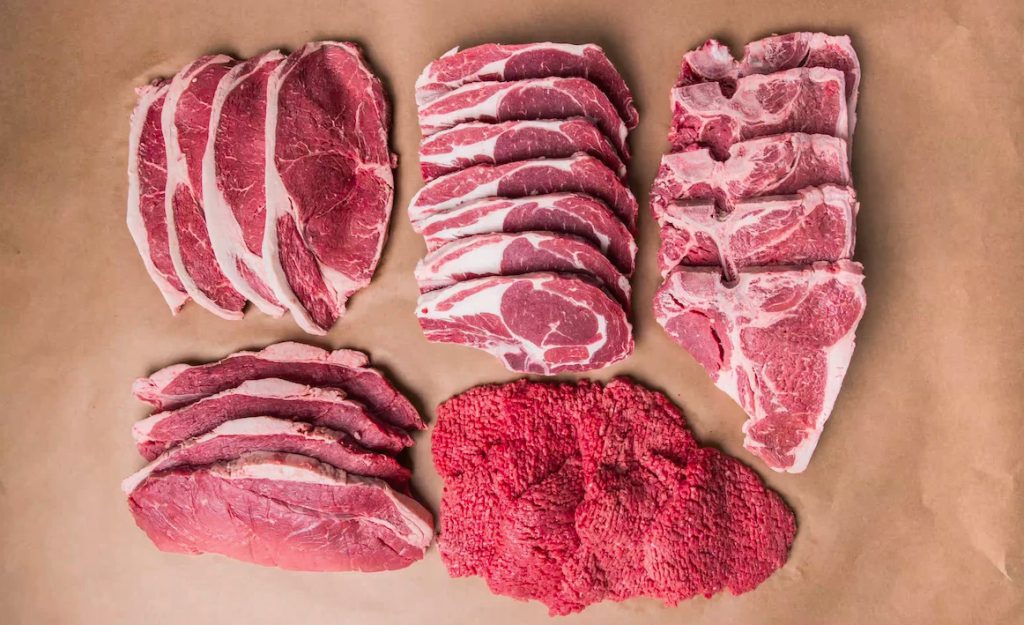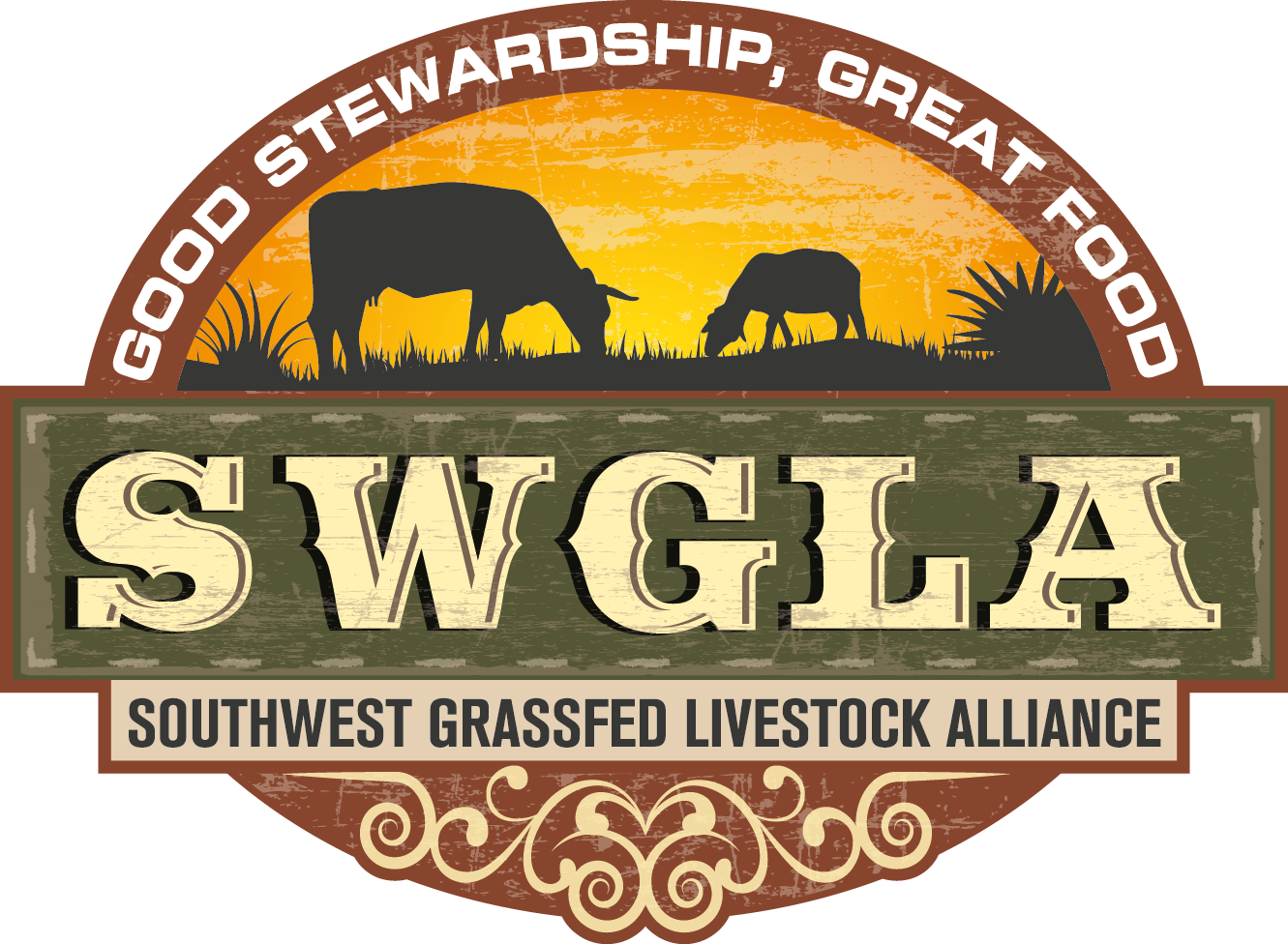Guidelines for Selling Grassfed Meat Locally

A summary outline of direct-marketing basics.
For more details, sign up for SWGLA’s Bringing Meat to Market educational programming!
Some advantages:
By eliminating the middleman and the feedlot, the rancher gets a higher price for the animals raised. The customer will pay a consistent price so that the ups and downs of the market will not affect income.
It has been demonstrated over and over again that meat from animals that have been kept in a feedlot is not as good for the consumer as meat from animals on free-range.
As the pandemic has shown us, food security depends upon having viable local food networks.
Disadvantages:
The main disadvantage is the extra work involved in communicating with customers, arranging custom processing, and delivery. The ranch will need a marketing outlet, such as a website or Facebook page, and someone to record and manage the orders. However, the extra income accrued can make all this worthwhile.
Basic building blocks:
The animals: Beef cattle can be harvested at different stages. Decide what best fits your ranch. Calves 7 – 9 months old can be harvested at weaning and will weigh between 600 and 750 pounds. Yearlings can be raised to 1000+ pounds. Cull cows can be used for ground beef and a few other cuts.
The processor: Identify a nearby processor to work with and secure slaughter dates. See below for details about custom vs. USDA processing and other considerations. You will need a way to get your animals to the processor.
Marketing: Consider various options for marketing and selling your product. You can reach customers via the internet and sell custom meat in quarters, halves, and wholes directly to customers. You can sell USDA processed cuts at farmers’ markets. You can sell to restaurants or partner with CSAs that also sell vegetables, or you can use eCommerce marketing outfits.
The ranch: You need to consider your overall livestock production plan, what animals you might have available for sale, and when, what they are likely to weigh, their degree of finish, and how marketing animals will affect your operation in terms of cash flow, forage resources, future production cycles, and staffing.
Any animals treated with medicine, dewormer, or certain vaccines must go through the mandatory withdrawal periods before slaughter. If you want to market your meat as grassfed, organic, natural, or under any other claim, you must be aware of the specific criteria for each of these claims, and certify your operation accordingly.
You will need a Livestock Board approved brand, and animals must be branded or identified according to state law. In most states, you will need to have a brand inspection before you haul an animal to be processed. If the animal is being sold on the hoof, you need a brand inspection and bill of sale listing the buyers. You should investigate what insurance you might need depending on your strategy.
It is also usually wise to legally separate meat sales enterprises from land or livestock ownership entities.
Further information:
To get started check the internet to see the various ways that grassfed meat is being marketed. Look at the Producer List on this website: https://grassfedlivestock.org/grassfed-producers/ and check out the websites.
Working with a meat processor:
The most important link in the chain from the rancher to the consumer is the meat processing plant. All agree that there are not enough local meat processors, especially those that can process under inspection by the USDA. So it can be a challenge to find a processing facility.
To choose a processing facility, there are several things you need to know:
- are their facilities clean and humane?
- what do they charge for processing?
- do they have additional fees for slaughter or offal disposal?
- how soon after you deliver an animal will it be processed?
- do they use butcher paper or do they also offer vacuum packing?
- are they willing to divide halves into quarters?
- are they USDA certified?
- will they dry-age meat and for how long?
- how soon do they need you to pick up once the meat is ready?
The most important factor in working with the meat processor is good communication. If your meat processor does not have a standard cut sheet, you’ll need to provide one and use it consistently. You’ll also need to explain exactly what you or your customers want. You will also need to understand something about the butchering process and the options you have.
If the processor makes a mistake on the cuts, don’t get mad and just go away. Try to work with them so they understand what you want. It may take several tries, but it is very satisfying to you and the meat processor to get it right and establish a firm relationship.
What to charge, who pays what?
The idea behind custom meat is that the customer is buying an animal or a share in an animal before it is processed. The rancher may (and usually does) deliver the animal to the processor, but it’s important for everyone to remember that the customer owns the animal from the time it leaves the ranch. For custom meat, the rancher usually asks for a deposit in advance.
To sell animals for custom meat, the rancher must obtain a brand inspection and create a bill of sale listing the buyer(s) before delivering the animal to the processor. The rancher needs to sign a contract with each customer describing the terms of sale and be clear that each party understands the process. The customer needs to pay the processing costs, or reimburse the rancher according to the terms of their contract.
Ranchers should charge the customer on the basis of live weight. This can be confusing to customers since there is no fixed yield of meat for a given live or carcass weight. Also, many small processors are not able to weigh and inventory packaged meat.
Some ranchers decide to simply establish a fixed dollar amount for a half or quarter, but that works best when the rancher is producing very consistent animal weights and yields. For meat processed under USDA or state meat inspection programs allowing for resale, it is also possible to charge the customer a fixed amount per pound of the packaged meat, which would include the processing.
Meat that is processed under USDA inspection can be sold by the individual cut; the rancher owns the animal throughout the process, pays all processing and storage expenses, and can sell the cuts in any way s/he wants. The price would depend upon the market for the individual cuts.
Working with the customer:
Dealing with customers can be a great pleasure. For the most part, they are very grateful to have you supplying them with good meat.
If you are advertising on the internet for direct sales, many of the new customers will be unfamiliar with the process. It means a lot to them if you explain thoroughly how the process works. For these customers, delivery to a nearby location is considered a big benefit.
Establish a standard process so that you know where you are with each customer at any given time. You will need to keep track of the quantity ordered, the deposit received, cut sheets if applicable, the date of delivery of the animal to the processor, and the expected date of delivery to the customer. You will need to give the customer an idea of when to expect their meat.
Keeping records:
Record the date of birth of animals, the date of vaccination, date of slaughter, and other important information. Record the weights of animals on the hoof, carcass weight, and final yield. It is good to know which of your animals has gone to which customer. All of this information will help you adjust production to improve quality and maximize your income.
Keep track of costs and income of the grassfed program separate from your traditional program.
Note: These guidelines are summarized for informational purposes only and not intended as legal opinion or advice. We urge producers to consult legal counsel and follow all applicable laws in developing their direct sales enterprises. For more in-depth information, join our Bringing Meat to Market business training series.

